The journey through Gyeongbokgung Palace, the National Folk Museum, Bukchon Hanok Village, and Jogyesa Temple in Insadong presents a tapestry of Korea’s heritage, captivating both the casual observer and the seasoned traveler. Visitors find themselves enchanted by Gyeongbokgung’s majestic architecture, while the Folk Museum reveals the country’s traditional customs and folklore. Strolling through Bukchon’s charming hanok houses evokes a sense of nostalgia, and the tranquility of Jogyesa Temple invites reflection. Yet, what stories might these sites tell, and how do they connect to the vibrant culture of modern Korea?
Key Points
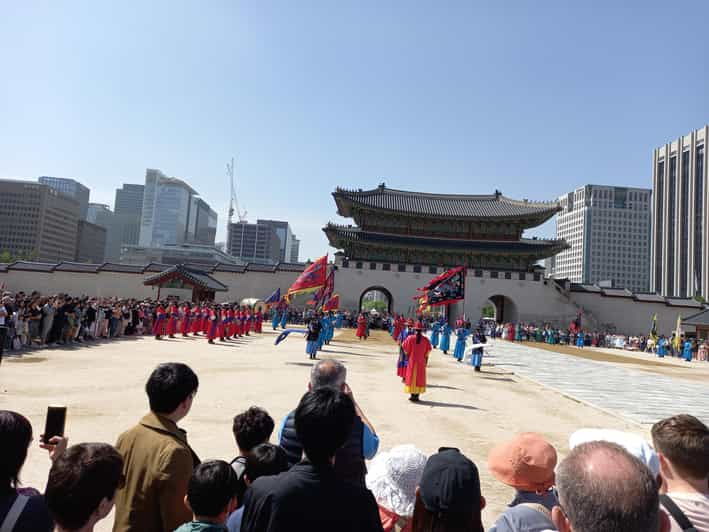
- Gyeongbokgung Palace, established in 1395, is Korea’s largest palace, showcasing Joseon Dynasty architecture and history.
- The National Folk Museum, located within Gyeongbokgung grounds, exhibits traditional Korean customs, clothing, and festivals.
- Bukchon Hanok Village features the largest collection of traditional hanoks, blending historical architecture with modern city life.
- Jogyesa Temple in Insadong is the headquarters of Korean Buddhism, known for its intricate wooden structure and peaceful gardens.
- The tour combines visits to these significant sites, enhancing understanding of Korea’s rich culture and heritage.
Tour Overview and Highlights

Embarking on a captivating four-hour journey, guests can explore the rich tapestry of Korean history and culture with a private tour that highlights iconic landmarks like Gyeongbokgung Palace and Bukchon Hanok Village.
Starting at Gwanghwamun Square, the tour features an English-speaking guide who shares insights into each site’s significance.
Visitors will marvel at the intricate architecture of Gyeongbokgung Palace, explore the daily life of the Joseon Dynasty at the National Folk Museum, and wander through the picturesque streets of Bukchon Hanok Village, where traditional hanoks stand in harmony with modernity.
The experience also includes a visit to Jogyesa Temple, providing a glimpse into Korea’s spiritual heritage, making it an unforgettable exploration of the nation’s cultural identity.
Like museums? Other Seoul cultural attractions we've reviewed
Gyeongbokgung Palace History
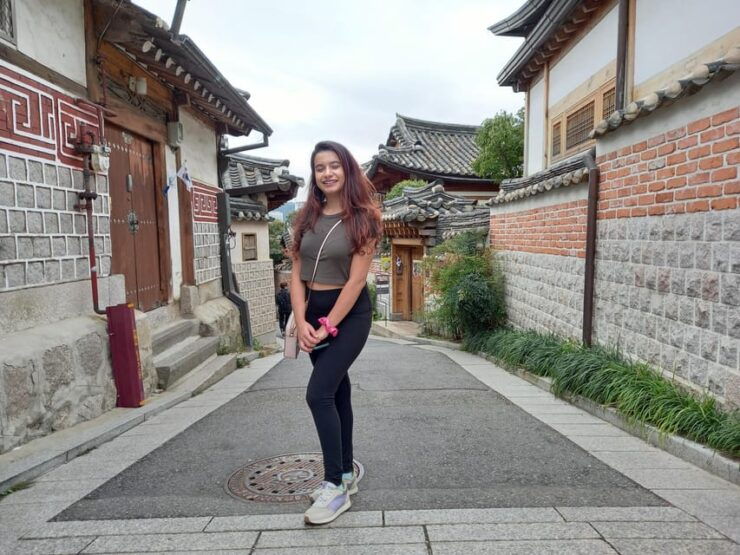
Gyeongbokgung Palace, established in 1395, stands as a testament to the grandeur of the Joseon Dynasty and embodies the essence of traditional Korean culture.
As the first and largest palace of its time, it showcases remarkable architectural beauty and historical significance. Visitors can appreciate the palace’s intricate designs and serene gardens that narrate the stories of Korea’s past.
Key features of Gyeongbokgung Palace include:
Stunning architecture reflecting the artistic achievements of the Joseon era.
Historical significance as the center of governance during the dynasty.
Cultural identity representing the spirit of Korea’s heritage.
This magnificent palace is a must-see attraction for anyone looking to understand the rich tapestry of Korean history and culture.
Exploring the National Folk Museum
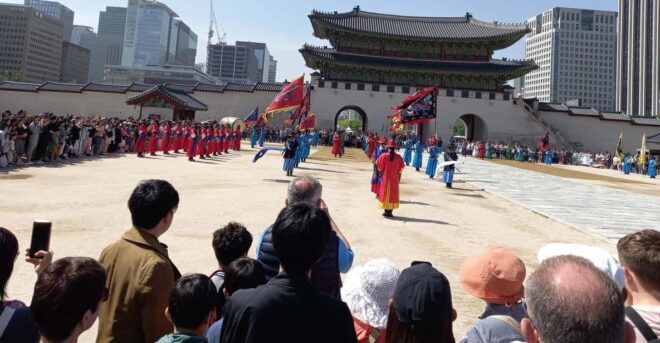
Nestled within the grounds of Gyeongbokgung Palace, the National Folk Museum offers a captivating glimpse into the customs and daily life of the Joseon Dynasty.
Visitors wander through carefully curated exhibits showcasing traditional clothing, tools, and household items, each telling a story of Korea’s rich cultural heritage.
The museum’s engaging displays illustrate major ceremonies, festivals, and everyday activities, immersing guests in the vibrant history of the era.
Interactive sections invite participation, making it an enjoyable experience for all ages.
With knowledgeable guides available, visitors gain deeper insights into the significance of each artifact.
This gem not only enhances a trip to Gyeongbokgung but also enriches understanding of Korea’s enduring traditions and societal evolution.
Discovering Bukchon Hanok Village
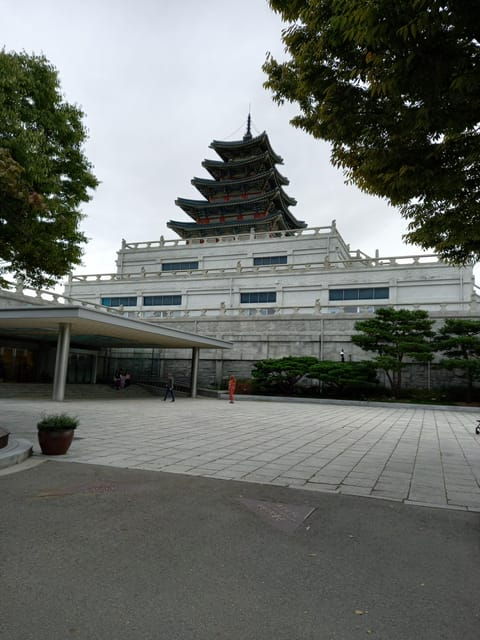
Visitors to the National Folk Museum can easily continue their journey to Bukchon Hanok Village, where the largest collection of traditional Korean houses, known as hanoks, offers a captivating insight into Korea’s architectural heritage and historical lifestyle.
Nestled between Gyeongbokgung Palace and modern skyscrapers, Bukchon seamlessly blends the old with the new.
Exploring this picturesque village, guests can enjoy:
Stunning views of traditional hanoks against the backdrop of N Seoul Tower
Unique cultural experiences, including traditional tea houses and craft workshops
Serene walking paths that reveal hidden gems and historical sites
As visitors wander through the narrow alleys, they’ll feel the essence of Korea’s past, enriching their understanding of the nation’s culture and history.
More Great Thing To Do NearbyVisiting Jogyesa Temple
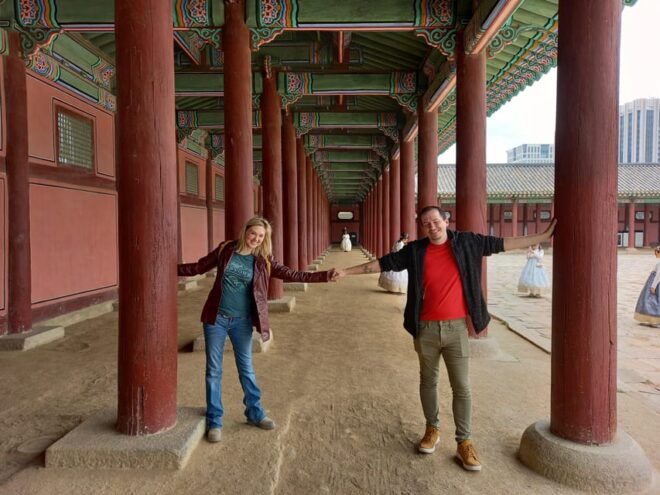
Jogyesa Temple stands as a serene oasis amidst the bustling streets of Insadong, inviting travelers to explore its rich spiritual heritage and stunning architectural beauty. Built in 1926, this vibrant temple serves as the headquarters of Korean Buddhism.
Visitors are greeted by the magnificent wooden structure adorned with intricate carvings and vibrant lanterns, creating a warm and welcoming atmosphere. The peaceful gardens surrounding the temple provide a tranquil escape, perfect for reflection or meditation.
Inside, the golden Buddha statue captivates with its serene expression, drawing visitors into a moment of contemplation. As travelers wander through the temple grounds, they absorb the harmonious blend of nature and spirituality, making their visit to Jogyesa a truly enriching experience.
- From Seoul: DMZ Tour With North Korean Defector Interview
- Seoul: Jisan Forest Ski Resort Day Trip (Transfers/ Lesson)
- Private English Speaking Driver in Seoul: Airport Service Available
- Seoul : Windsurfing & Foiling Experience
- ARMY Must Visit BTS Tour in Seoul
- Kpop Dance Lesson & Free Video Shooting in Seoul
Cultural Significance of the Sites
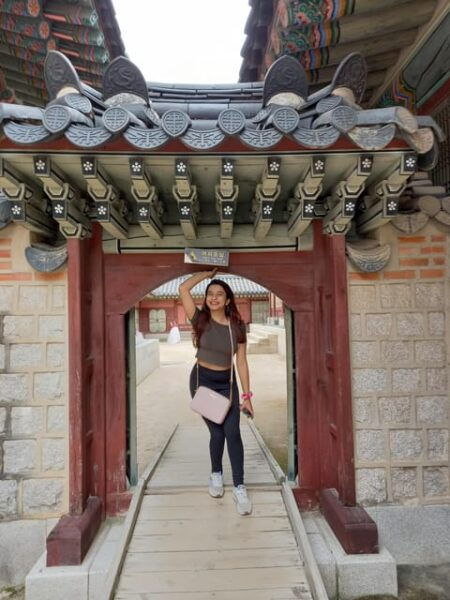
The cultural significance of Gyeongbokgung Palace, the National Folk Museum, Bukchon Hanok Village, and Jogyesa Temple lies in their embodiment of Korea’s rich history, architectural artistry, and enduring traditions that continue to shape the nation’s identity.
Each site serves as a testament to Korea’s vibrant past and evolving culture, attracting locals and travelers alike.
Gyeongbokgung Palace represents the pinnacle of Joseon architecture.
The National Folk Museum preserves vital aspects of Korean customs and ceremonies.
Bukchon Hanok Village showcases the harmonious blend of history and modernity.
Together, these sites offer profound insights into the spirit of Korea, highlighting the importance of cultural heritage and community in shaping the country’s future.
Practical Tour Information
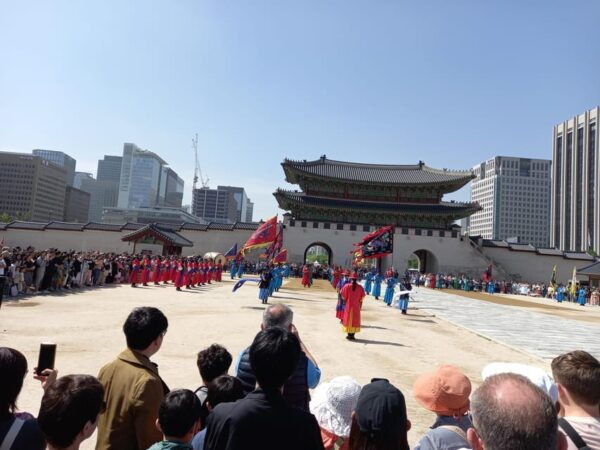
Exploring these culturally rich sites is made easy with practical tour information that enhances the overall experience for travelers.
For just $137.25, small groups of up to three can enjoy a four-hour guided tour led by an English-speaking expert.
Starting at Gwanghwamun Square, the tour includes visits to stunning Gyeongbokgung Palace, the enlightening National Folk Museum, the charming Bukchon Hanok Village, and the serene Jogyesa Temple.
Travelers can choose their meeting point, adding convenience to their adventure.
The package covers guide fees, admission fees, transportation, food, and insurance, while offering free cancellation up to 24 hours in advance.
This comprehensive approach ensures a seamless and fulfilling exploration of Korea’s cultural treasures.
Visitor Experiences and Reviews
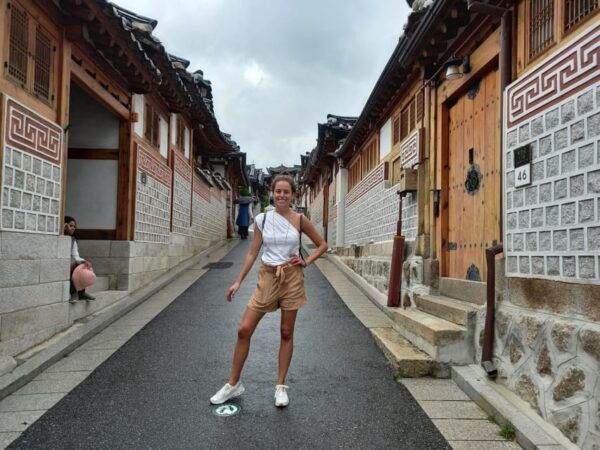
Visitors consistently rave about their experiences on this immersive tour, highlighting the knowledgeable guides who bring Korea’s rich history to life. Many participants appreciate the seamless blend of breathtaking sights and insightful commentary, which deepens their understanding of the culture.
Key aspects of their reviews include:
Engaging storytelling: Guides share captivating tales that resonate with visitors, making history feel alive.
Personal connection: Tourists feel a personal touch from the guides, enhancing their experience.
Cultural immersion: Each stop, from Gyeongbokgung to Jogyesa Temple, offers a unique glimpse into Korean traditions and lifestyles.
Questions You May Have
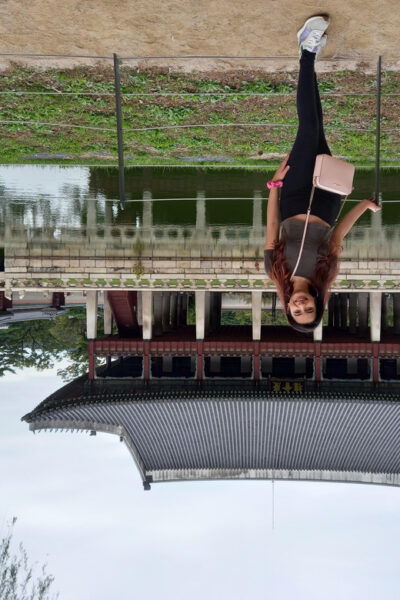
What Is the Best Time to Visit These Attractions?
The best time to visit these attractions is during spring or autumn. These seasons offer mild weather and vibrant colors, enhancing the experience while exploring rich cultural sites and appreciating their stunning architecture and historical significance.
Are There Any Age Restrictions for the Tour?
The tour has no specific age restrictions, welcoming participants of all ages. Families often enjoy the experience together, making it an enriching adventure for children and adults alike, as they explore Korea’s rich cultural heritage.
Is Photography Allowed at Each Site?
Photography’s generally allowed at most sites, enhancing visitors’ experiences. However, some areas might have restrictions. It’s best for participants to check with their guide to ensure they respect the rules while capturing memories.
What Should I Wear for the Tour?
For the tour, he should wear comfortable clothing and sturdy shoes, as there’ll be walking involved. Layering is wise, considering potential weather changes. A hat and sunscreen will enhance his comfort during outdoor exploration.
Can I Customize the Tour Itinerary?
She can absolutely customize the tour itinerary. The guide’s flexibility allows her to explore specific interests, ensuring a personalized experience that makes the journey more enjoyable and tailored to her preferences and desires.
Break Down
To sum it up, the tour of Gyeongbokgung Palace, the National Folk Museum, Bukchon Hanok Village, and Jogyesa Temple offers an unforgettable journey through Korea’s history and culture.
Visitors leave with a deeper appreciation for the country’s rich heritage, from the majestic palace to the serene temple gardens.
Each stop reveals unique stories and traditions, making this exploration not just a sightseeing adventure, but a meaningful connection to Korea’s vibrant past and present.
You can check if your dates are available here:More Museum Tours in Seoul
More Tour Reviews in Seoul
Looking for something different? Other Seoul activities we've written about
- 25 Best Guided Tours In Seoul
- 25 Best Workshops And Classes In Seoul
- 25 Best Shopping Tours In Seoul
- 25 Best Tours In Seoul
- 4 Best Massage And Relaxation Services In Seoul
- 20 Best Historical Tours In Seoul
- 11 Best 3 Day Tours In Seoul
- 20 Best Full-Day Tours In Seoul
- 9 Best Boat Tours And Cruises In Seoul
- 8 Best 4 Day Tours In Seoul
- 18 Best Photography Experiences In Seoul
- 20 Best Private Driver Services In Seoul
